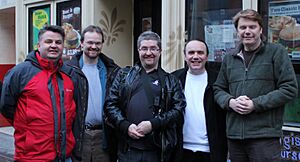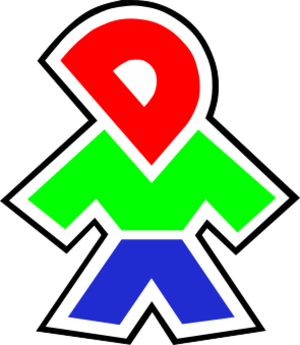Rockstar North facts for kids
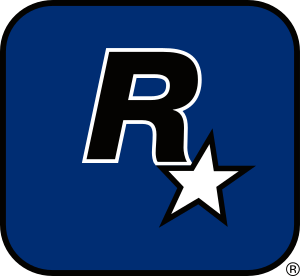 |
|
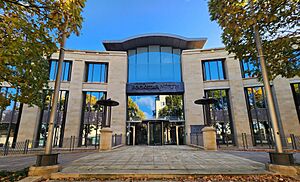
Headquarters at Barclay House, Edinburgh
|
|
|
Trade name
|
Rockstar North |
|---|---|
|
Formerly
|
|
| Subsidiary | |
| Industry | Video games |
| Founded | 1988 in Dundee, Scotland |
| Founder | David Jones |
| Headquarters |
,
Scotland
|
|
Key people
|
Andrew Semple (studio director) |
| Products |
|
|
Number of employees
|
650 (2018) |
| Parent |
|
Rockstar North, also known as Rockstar Games UK Limited, is a British video game developer. It is a studio that is part of Rockstar Games and is located in Edinburgh, Scotland. This studio is famous for creating the Lemmings and Grand Theft Auto game series. One of its biggest hits is Grand Theft Auto V, which is one of the best-selling games ever.
The company started as DMA Design in 1988 in Dundee. Its founder, David Jones, had already made a game called Menace. He signed a deal to publish six games with a company called Psygnosis. While working on the next game, Blood Money, Jones left college. He hired some friends, including Mike Dailly, and they opened their first office in 1989.
In 1991, the game Lemmings became a huge success. The studio grew quickly and moved to bigger offices. After making several Lemmings games, DMA Design's last game in that series was All New World of Lemmings in 1994.
Later, Jones sold the studio to Gremlin Interactive in 1997 because it was having money problems. The game Grand Theft Auto was a big success. This led to Take-Two Interactive buying the rights to the game and forming Rockstar Games in 1998. In 1999, Take-Two bought DMA Design, which helped them work closely with Rockstar Games on Grand Theft Auto 2.
A few months after opening an office in Edinburgh, the original Dundee office closed. In 2001, Grand Theft Auto III was released. It was the first Grand Theft Auto game in full 3D and sold millions of copies. In 2002, DMA Design became Rockstar Studios, and then later that year, it was renamed Rockstar North. Since then, the studio has continued to make more Grand Theft Auto games, like Grand Theft Auto: Vice City (2002) and Grand Theft Auto V (2013). Rockstar North also made Manhunt in 2003 and helped other Rockstar Games studios with games like Red Dead Redemption (2010) and Red Dead Redemption 2 (2018).
Contents
- How the Company Started
- Early Days and Founding (1983–1988)
- First Games and Lemmings Success (1988–1994)
- Working with Nintendo and BMG Interactive (1994–1997)
- Sale to Gremlin Interactive (1997)
- Sale to Take-Two Interactive (1997–2000)
- Grand Theft Auto Trilogy and Renaming (2000–2004)
- Grand Theft Auto IV, Grand Theft Auto V, and Collaborations (2004–2013)
- Recent Growth and Changes (2014–Present)
- Games Developed
- See also
How the Company Started
Early Days and Founding (1983–1988)
Rockstar North began as DMA Design, founded by David Jones from Dundee. He learned about programming in school. In 1983, he started an apprenticeship at a factory that made home computers. This factory was in Dundee, which was a hub for people interested in programming.
Jones also took programming classes and joined a computer club. There, he met Steve Hammond, Russell Kay, and Mike Dailly. They all loved making new games instead of just playing or copying old ones.
After the factory had layoffs, Jones used his severance pay to buy a powerful computer called an Amiga 1000. He then studied computer science at the Dundee Institute of Technology. While studying, he spent a year creating a shoot 'em up game called CopperCon1. He worked from his parents' home.
Jones showed his game to publishers. He eventually signed a deal with Psygnosis in 1987 to publish six games. CopperCon1 was renamed Menace. In 1988, Jones officially started his company, DMA Design. The "DMA" in the name didn't stand for anything specific, though Jones sometimes joked it meant "Doesn't Mean Anything." He was 22 years old when he founded the company.
First Games and Lemmings Success (1988–1994)
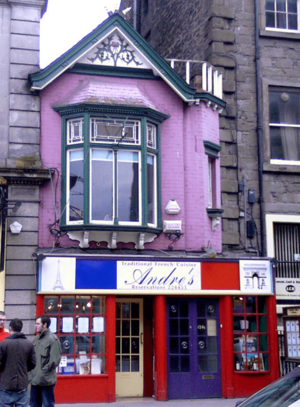
Menace was released in October 1988. It was DMA Design's first game. Even though Jones didn't earn much per copy, the sales allowed him to buy a car and visit other game developers. While working on the next game, Jones decided to leave university to focus on game development full-time.
He hired Dailly as his first employee in 1989. Hammond and Kay also joined soon after. Their next game, Blood Money, came out in April 1989 and sold well. The company's first office was above a former fish and chip shop in Dundee.
In 1990, DMA Design stopped working on a few projects. Then, a programmer named Ian Dunlop and artist Neill Glancy experimented with technology from another game. Dailly challenged himself to create tiny characters that were still easy to recognize. He made a demo of small characters walking in a line and being comically defeated. Kay suggested making a game from this idea.
Jones and Timmons worked on the gameplay. The game was named Lemmings and released in February 1991. It sold 55,000 copies on its first day and quickly became popular worldwide. Lemmings eventually sold 20 million copies across many different game systems. Jones became a millionaire at 25 years old.
The company grew fast and started making more games. Psygnosis wanted more Lemmings games, so the studio developed Oh No! More Lemmings (1991), Lemmings 2: The Tribes (1993), and All New World of Lemmings (1994). They also made free Christmas-themed Holiday Lemmings games.
By 1992, DMA Design had 22 staff members and moved to bigger offices in Dundee. In 1993, Kay left to start his own company, Visual Sciences. All New World of Lemmings was the last game in Jones's original deal with Psygnosis. The studio was ready to move on from the Lemmings series.
Working with Nintendo and BMG Interactive (1994–1997)
After Lemmings, DMA Design started looking into making games for new systems. Jones showed Nintendo a video clip that impressed them. Nintendo was looking for partners for their new Nintendo 64 console. DMA Design signed a deal to make two games for Nintendo in 1994. This deal helped the studio grow even more, adding more office space and equipment.
DMA Design's first game for Nintendo was Unirally, a racing game. After it came out in 1994, another company, Pixar, sued Nintendo. They felt the game's characters looked too much like a character from one of Pixar's short films. Nintendo stopped making copies of Unirally, but the game still sold 300,000 copies. DMA Design also worked on Kid Kirby, a game for Nintendo's Kirby series.
Meanwhile, Dailly was experimenting with making 3D buildings from a top-down view. He created a demo where a player controlled a dinosaur destroying a city. Someone suggested driving cars instead. Jones liked the idea and gave it to a team to turn into a game. This project became Race'n'Chase.
In 1995, DMA Design signed a deal with BMG Interactive to make four games. With this money, the studio grew to 130 people. They also set up a motion capture studio and a music section. Race'n'Chase began production in March 1995.
However, some projects, like Body Harvest and Kid Kirby, faced delays or were canceled. The American part of BMG Interactive often wanted Race'n'Chase to be canceled because the team kept missing deadlines. DMA Design faced money problems. Jones sometimes agreed to new game projects just to get upfront payments, even if they didn't have clear plans. At one point, the studio was working on seven or eight projects at once. In 1996, Jones sold the rights to Grand Theft Auto to BMG Interactive to help the studio stay afloat. In November 1996, DMA Design opened a small studio in Boulder, Colorado.
Sale to Gremlin Interactive (1997)
The development of Body Harvest was difficult due to different demands from Nintendo's Japanese and American offices. Nintendo was not happy with the game and canceled it. Still facing money problems, Jones arranged for Gremlin Interactive to buy DMA Design for £4.2 million in April 1997. Gremlin Interactive wanted the two companies to work together on new technology. They also wanted DMA Design to become profitable within two years. Jones received a share in Gremlin Interactive and became a creative director for DMA Design. By May, the studio had 100 employees.
As a result of the sale, the Boulder studio became a separate company called Devil's Thumb Entertainment. This studio was working on a remake of Hired Guns.
Two months after DMA Design was bought, Gremlin Interactive became a public company. Meanwhile, BMG Interactive decided to leave the video game industry. The game Grand Theft Auto was then licensed to other publishers in North America. Gremlin Interactive also took over the rights to Body Harvest.
In 1997, DMA Design became one of the first members of the Scottish Game Alliance. Jones also helped the Dundee Institute of Technology start a new computer games degree.
Sale to Take-Two Interactive (1997–2000)
Before Race'n'Chase, now called Grand Theft Auto, was released, a publicist named Max Clifford used controversy to market the game. Some people in the UK Parliament even called for the game to be banned. Grand Theft Auto was released in November 1997. Despite mixed reviews, it quickly sold 500,000 copies and made £25 million. The success of Grand Theft Auto led to plans for a sequel.
Take-Two Interactive was looking to grow its business. In March 1998, Take-Two bought BMG Interactive, which was no longer active. Through this purchase, Take-Two gained the rights to Grand Theft Auto. Sam Houser then joined Take-Two to lead their game development. Take-Two also bought all the individual publishing rights for Grand Theft Auto to own them worldwide.
Body Harvest and Space Station Silicon Valley were released in late 1998 but didn't sell well. In December 1998, Houser and his former BMG Interactive colleagues formed the Rockstar Games publishing label. Rockstar Games then had another studio, Rockstar Canada, develop two expansion packs for the original game: Grand Theft Auto: London 1969 and Grand Theft Auto: London 1961.
In March 1999, the poor sales of Body Harvest contributed to financial problems at Gremlin Interactive. This led to a French publisher, Infogrames, taking over Gremlin Interactive. Dailly left DMA Design to join Kay at Visual Sciences. Infogrames was more interested in family-friendly games, so they didn't want to keep anything related to Grand Theft Auto.
In September 1999, Take-Two Interactive bought DMA Design from Infogrames for a very low price, but also took on its debt. DMA Design then started working closely with Rockstar Games. During these changes, several projects were canceled. At the time, DMA Design was working on a 3D Grand Theft Auto game.
Grand Theft Auto 2, published by Rockstar Games, was released in October 1999 and quickly sold over 1 million copies. Soon after, DMA Design opened a new studio in Edinburgh. This new branch had 25 people and continued to develop a 3D Grand Theft Auto game, which eventually became Grand Theft Auto III. Jones was the last original DMA Design team member to work on this game. However, he left the company in early 2000. He then formed a new game studio called Denki.
Rockstar Games released Wild Metal Country for the Dreamcast in February 2000. Take-Two encouraged DMA Design to focus on fewer, larger game projects. Many staff members felt this change took away from the creative atmosphere they enjoyed. The Dundee studio closed in March 2000, and many of its 35 staff moved to Edinburgh.
Grand Theft Auto Trilogy and Renaming (2000–2004)
During the making of Grand Theft Auto III, DMA Design grew quickly again, with a core team of 20 people and a total of 60. The team focused on creating a large, open world, like the previous games, but with full 3D graphics and a third-person view. The game was released for the PlayStation 2 in late 2001. It sold 6 million copies in one year and over 15 million in total, much more than expected. Grand Theft Auto III was a huge success and inspired many other games.
Plans for an online multiplayer part in Grand Theft Auto III were dropped to make a follow-up game, Grand Theft Auto: Vice City. This game was first planned as an expansion but became a full standalone product. Vice City used the same game engine as its predecessor. In March 2002, DMA Design was renamed Rockstar Studios, and then in May, it became Rockstar North. Vice City was finished in one year and released in late 2002. Rockstar North won awards for its work on the game.
After Vice City, Rockstar North started working on a zombie survival game called Z, but it was stopped after about a month. The studio then released Manhunt, a stealth game, in 2003. This game was considered a special project for the studio because of its intense style. Despite causing some debate, it sold 1.5 million copies. Rockstar North also helped other studios with a sequel, Manhunt 2, which started production in 2004.
Grand Theft Auto: San Andreas was given an extra year of development time compared to Vice City. This allowed the team to improve the gameplay and graphics. By the end of its production, Rockstar North had moved to new offices in Edinburgh. San Andreas was released in October 2004. In just four days, it made $101 million and sold 2.1 million copies. The game won many awards, including "game of the year". The games Grand Theft Auto III, Vice City, and San Andreas were later bundled together as Grand Theft Auto: The Trilogy. By 2008, these three games had sold millions of copies.
Grand Theft Auto IV, Grand Theft Auto V, and Collaborations (2004–2013)
After San Andreas, Rockstar North began making Grand Theft Auto IV. At the same time, the studio started working on a stealth game called Agent. The studio was split between these two projects, but Grand Theft Auto IV soon became the main focus. Agent was announced in 2009 but was later stopped. Meanwhile, Rockstar North worked with Rockstar Leeds on three Grand Theft Auto games for handheld systems: Liberty City Stories, Vice City Stories, and Chinatown Wars.
Grand Theft Auto IV involved 220 people at Rockstar North and 1,000 people worldwide. The game's budget was estimated at $100 million. When it was released in April 2008, Grand Theft Auto IV broke records for the highest revenue for a game in one day, making $310 million from 3.6 million copies sold. It won "game of the year" awards. The studio then released two expansion packs for the game: The Lost and Damned and The Ballad of Gay Tony.
Rockstar North also helped other Rockstar Games studios with games like Red Dead Redemption in 2010 and L.A. Noire in 2011. For Max Payne 3 in 2012, Rockstar North worked with many other Rockstar Games studios.
Right after finishing Grand Theft Auto IV, Rockstar North started early work on Grand Theft Auto V. Rockstar North's 360 employees were the core of a worldwide team of 1,000 staff. The main development took about three years, and the game was released in September 2013. The game broke records for being the best-selling and highest-earning video game in one day. It was also the fastest entertainment product to reach $1 billion in revenue, doing so in just three days. With continued sales and the success of its online multiplayer part, Grand Theft Auto Online, the game earned an estimated $6 billion by 2018. It became one of the most profitable entertainment products ever. As of March 2024, Grand Theft Auto V had sold 200 million copies, making it the second-best-selling game of all time.
Recent Growth and Changes (2014–Present)
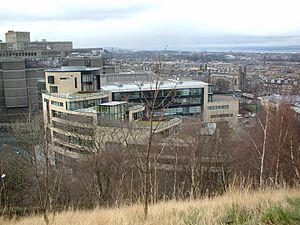
In 2014, Rockstar North moved into a large office space in Barclay House in Edinburgh. The studio also started receiving money from a new Video Games Tax Relief system set up by the government of the United Kingdom.
When Leslie Benzies, the studio head, took a break in September 2014, his duties were taken over by Aaron Garbut and Rob Nelson. Benzies did not return, and his departure was announced in January 2016. In April 2016, Benzies had a disagreement in court with Rockstar Games and Take-Two. He claimed he was owed money after leaving. Take-Two said his claims were not true. The disagreement was settled in February 2019.
For Red Dead Redemption 2, all Rockstar Games studios worked together as one big team. By the time the game was released in October 2018, Rockstar North had grown to 650 employees. In July 2021, Rockstar North bought Barclay House, where its main office was, and another nearby building. In 2022, the studio expanded its office space even more in the second building.
Games Developed
As DMA Design
| Year | Title | Platform(s) | Publisher(s) | Notes | |
|---|---|---|---|---|---|
| 1988 | Menace | Amiga, Atari ST, Commodore 64, MS-DOS | Psygnosis | ||
| 1989 | Ballistix | Commodore 64, MS-DOS, PC Engine | Port development | ||
| Blood Money | Amiga, Atari ST, MS-DOS, Commodore 64 | ||||
| Shadow of the Beast | Commodore 64, PC Engine | Port development | |||
| 1991 | Lemmings | 3DO, Acorn Archimedes, Amiga, Amiga CD32, Amstrad CPC, Atari Lynx, Atari ST, CD-i, CDTV, Commodore 64, FM Towns, Game Boy, Game Gear, J2ME, Mac OS, Master System, Mega Drive, MS-DOS, Nintendo Entertainment System, PC-98, PC Engine, SAM Coupé, Super Nintendo Entertainment System, X68000, ZX Spectrum | |||
| Oh No! More Lemmings | Acorn Archimedes, Amiga, Atari ST, Mac OS, MS-DOS, SAM Coupé | ||||
| 1993 | Walker | Amiga | |||
| Lemmings 2: The Tribes | Acorn Archimedes, Amiga, Atari ST, FM Towns, Game Boy, Mega Drive, MS-DOS, Super Nintendo Entertainment System | ||||
| Hired Guns | Amiga, MS-DOS | ||||
| Holiday Lemmings 1993 | Amiga, Mac OS, MS-DOS | ||||
| 1994 | All New World of Lemmings | Amiga, MS-DOS | |||
| Holiday Lemmings 1994 | Amiga, MS-DOS | ||||
| Unirally | Super Nintendo Entertainment System | Nintendo | |||
| 1997 | Grand Theft Auto | MS-DOS, PlayStation, Windows | BMG Interactive, ASC Games, Take-Two Interactive | ||
| 1998 | Body Harvest | Nintendo 64 | Gremlin Interactive, Midway Home Entertainment | ||
| Space Station Silicon Valley | Nintendo 64, PlayStation | Take-Two Interactive | |||
| 1999 | Tanktics | Windows | Gremlin Interactive, Interplay Entertainment | ||
| Wild Metal Country | Dreamcast, Windows | Gremlin Interactive, Rockstar Games | |||
| Grand Theft Auto 2 | Dreamcast, PlayStation, Windows | Rockstar Games | |||
| 2001 | Grand Theft Auto III | Android, Fire OS, iOS, macOS, PlayStation 2, Windows, Xbox |
As Rockstar North
| Year | Title | Platform(s) | Publisher(s) | Notes | |
|---|---|---|---|---|---|
| 2002 | Grand Theft Auto: Vice City | Android, Fire OS, iOS, macOS, PlayStation 2, Windows, Xbox | Rockstar Games | ||
| 2003 | Manhunt | PlayStation 2, Windows, Xbox | |||
| 2004 | Grand Theft Auto: San Andreas | Android, Fire OS, iOS, macOS, PlayStation 2, PlayStation 3, Windows, Windows Phone, Xbox, Xbox 360 | |||
| 2005 | Grand Theft Auto: Liberty City Stories | Android, Fire OS, iOS, PlayStation 2, PlayStation Portable | Co-developed with Rockstar Leeds | ||
| 2006 | Grand Theft Auto: Vice City Stories | PlayStation 2, PlayStation Portable | Co-developed with Rockstar Leeds | ||
| 2007 | Manhunt 2 | PlayStation 2, PlayStation Portable, Wii, Windows | Supportive development for Rockstar London | ||
| 2008 | Grand Theft Auto IV | PlayStation 3, Windows, Xbox 360 | |||
| 2009 | Grand Theft Auto IV: The Lost and Damned | PlayStation 3, Windows, Xbox 360 | |||
| Grand Theft Auto: Chinatown Wars | Android, Fire OS, iOS, Nintendo DS, PlayStation Portable | Co-developed with Rockstar Leeds | |||
| Grand Theft Auto: The Ballad of Gay Tony | PlayStation 3, Windows, Xbox 360 | ||||
| 2010 | Red Dead Redemption | Nintendo Switch, PlayStation 3, PlayStation 4, Windows, Xbox 360 | Supportive development for Rockstar San Diego | ||
| 2011 | L.A. Noire | Nintendo Switch, PlayStation 3, PlayStation 4, Windows, Xbox 360, Xbox One | Supportive development for Team Bondi | ||
| 2012 | Max Payne 3 | macOS, PlayStation 3, Windows, Xbox 360 | Developed as part of Rockstar Studios | ||
| 2013 | Grand Theft Auto V | PlayStation 3, PlayStation 4, PlayStation 5, Windows, Xbox 360, Xbox One, Xbox Series X/S | |||
| 2018 | Red Dead Redemption 2 | PlayStation 4, Stadia, Windows, Xbox One | Developed as part of Rockstar Games |
Cancelled Games
- Gore!
- Cutiepoo
- Covert
- Zenith
- Kid Kirby
- Attack!
- Clan Wars
- Grand Theft Auto: Online Crime World
- Z
- Agent
See also
 In Spanish: Rockstar North para niños
In Spanish: Rockstar North para niños


